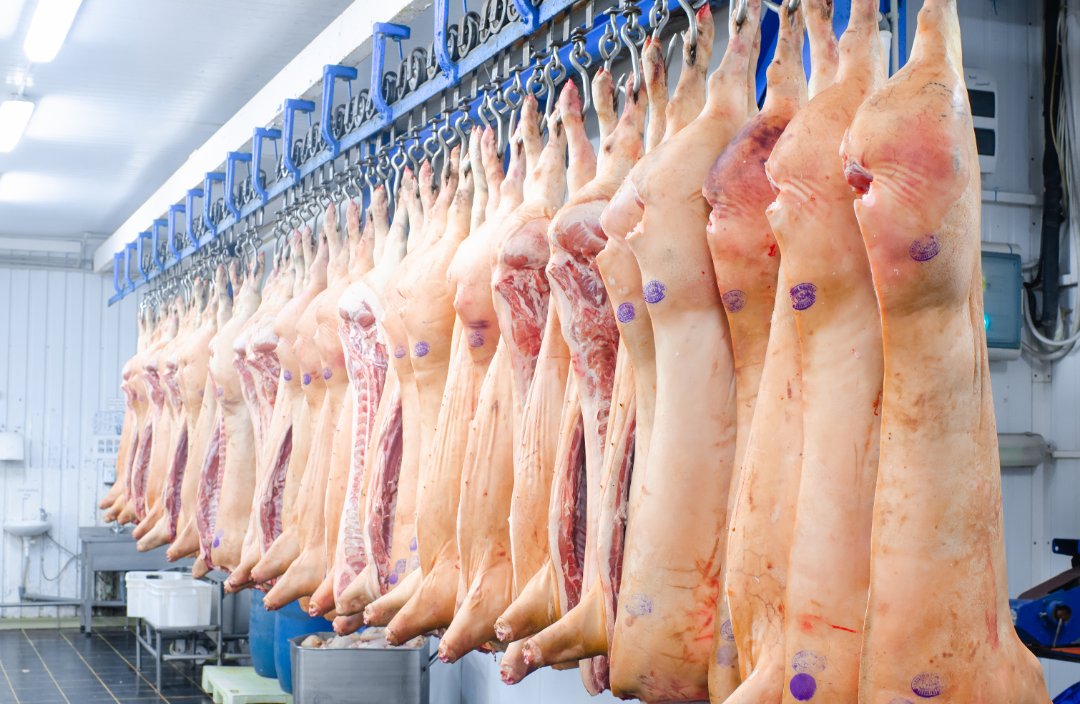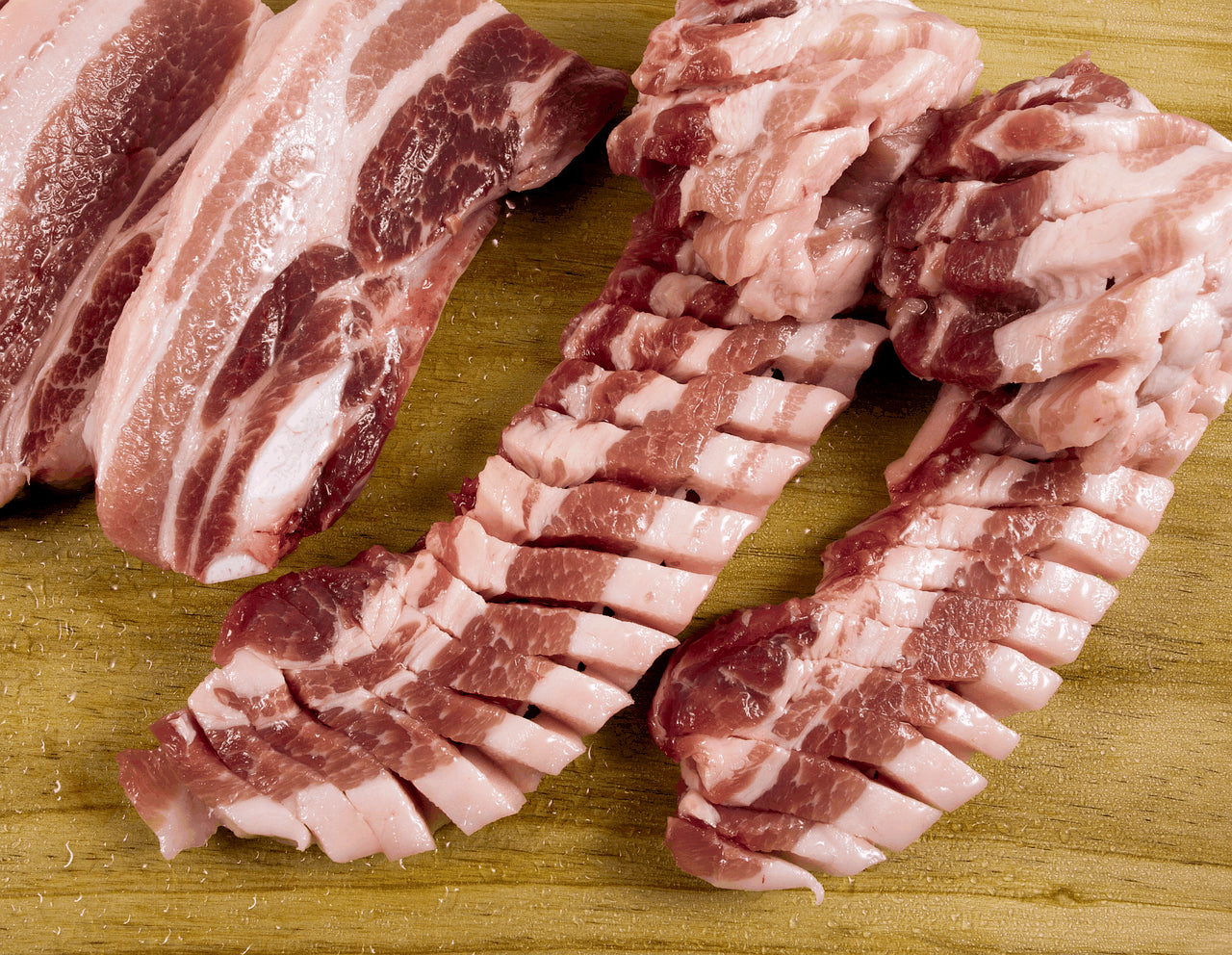To get a premium culinary experience, having the choicest ingredients is crucial, as they can make a world of difference to your cooking outcomes. When discussing selecting pork belly, the consideration becomes more complex yet important. Renowned for its succulent taste and unforgettable textures, the right type of pork belly can be a transformative addition to your kitchen ensemble. Below, we will learn about all the relevant factors to choose the best pork belly to offer you the tastiest treats.
Overview of Pork Belly
Pork belly is a fatty and flavourful cut of pork taken from the belly of a pig, located beneath the loin and spare ribs. It is known to have a rich and succulent taste loaded with juicy flavors. Pork belly bacon, a popular and beloved choice of breakfast meat, is derived by smoking and curing the belly. Although it has a high fat content, you can also find a variety of nutrients packed into a slab of meat, including protein, vitamins (like B12 and niacin), zinc, and selenium. It is a highly versatile meat cut that can be adapted to multiple cooking methods, providing luscious and diverse recipes.
Factors Impacting Flavor and Taste
To get the best outcomes, assessing the right type of source, in this case, the pig, is of utmost importance. The quality of the meat cut will depend upon the conditions of the slaughtered pig. A pig’s characteristics can affect the taste of the derived meat in the following ways.
Breed of Pig
The breed of pig chosen directly impacts the flavor of the pork derived from it. This is so because breeds have differences in the levels of intramuscular fat, influencing the texture and taste. Certain thick breeds, such as Berkshire, Duroc, and Tamworth, are bred specifically for their meat as they carry a good balance of fat and lean muscle, providing a unique flavor. On the other hand, local and commercial breeds like Yorkshire and Landrace may have leaner bellies with less marbling effects, thus affecting the taste.
Feeding Practices
The quality of the harvest and pasture consumed by the pig can heavily alter the taste of its meat. High volumes of nutrient-dense foods ensure a more luscious taste and refined texture of the derived pork. The open access to pasture and forage for natural vegetation has a unique influence on the meat’s flavor. The addition of preservatives and synthetic flavoring agents also influences the pork’s flavor.
Aging Process
Letting the meat age naturally at its own pace can enhance its taste. As the enzymes break down the meat’s tissues, it softens the meat, improving its texture. The flavoring compounds also intensify with age, contributing to the improved taste.
Key Factors for Choosing the Perfect Cut
When you go to buy pork belly cuts, being mindful of the following factors can refine your selection process and offer optimum results.
Thickness
The thickness of the meat determines its uniformity in cooking, succulence, visual appeal, and moisture/nutrient retention. A pork cut should ideally be around 1 inch thick to offer the best taste.
Fat-to-Meat Ratio
The fat-to-meat ratio in pork refers to the proportion of fat relative to lean meat in a cut. This is an important factor, as the right proportion can produce juicier and more tender meat. A high ratio also allows for greater versatility in adapting various cooking methods. A balanced ratio assures well-rounded flavors to offer all the right flavors.
Skin Quality
Pork skin is a major contributor to superlative meat quality. A soft, visually pleasing, and good-quality pork skin is an indicator of a moist and richly textured meat cut.
Freshness
Like any other farm-grown food ingredient, pork also offers a richer taste when it is fresh. The increased level of tenderness, juiciness, and softness in a freshly sourced piece of meat provides an unparalleled taste, further enhancing its quality.
Additional Considerations
To make your purchase altogether more authentic, you can also consider some of the following additional factors.
Source
Pick a credible and ethical source of meat supply to ensure that the meat is sourced through sustainable and safe practices. Ensure that the meat you pick is extracted through animal-friendly practices in a healthy environment.
Specific Recipe Requirements
Since pork is utilized in a variety of recipes, knowing your specific dish’s requirements can help you make an informed choice. Different cuts and quantities can have different outcomes, thereby altering the tastes significantly.
Budget
Knowing your available monetary resources is crucial in deciding the quality of your food purchases. The price of pork depends on the cut type, quantity, and market price. To make the best choice that balances both the food quality and your economic means, it is important to pre-decide on a budget.
Fuel Your Passion for Food with Red Field Ranch
At Red Field Ranch, we understand the importance of providing healthy and ethically sourced animal meat. Hence, we have worked to establish ourselves as a premium supplier of exceptional pork and meat products. We specialize in selling the choicest farm ingredients loaded with flavor and tenderness. You can visit our website to learn more about our selection.
FAQs
Q.1 What type of meat is pork belly?
Pork belly is a fatty and flavorful cut of meat, known for its rich, succulent texture and ability to become tender and crispy when cooked properly.
Q.2 Which cut is derived from pork belly?
The primary cut derived from pork belly comes from the pig's underside, specifically from the belly area. It is a rectangular slab of meat with alternating layers of lean meat and fat.
Q.3 What is special about pork belly?
Pork belly is highly regarded in the culinary world for various reasons. It has an intense, rich flavor with succulent layers of fat. It can adapt to a variety of cooking methods, proving its versatility. When cooked right, pork belly can develop a deliciously crispy skin, which adds an enjoyable contrast to the tender meat.
Q.4 What are the layers of pork belly?
Pork belly consists of several layers, each with a unique taste and texture. The outermost layer of pork belly is the skin or rind, which can become crispy when cooked properly. Underneath it is the fat layers contributing to its succulence, richness, and flavor. Between the layers of fat, there is meat that varies in texture and tenderness.
Q.5 Does pork belly have bones?
Pork belly is typically boneless as it is a fatty cut from the underside of a hog's belly.




















